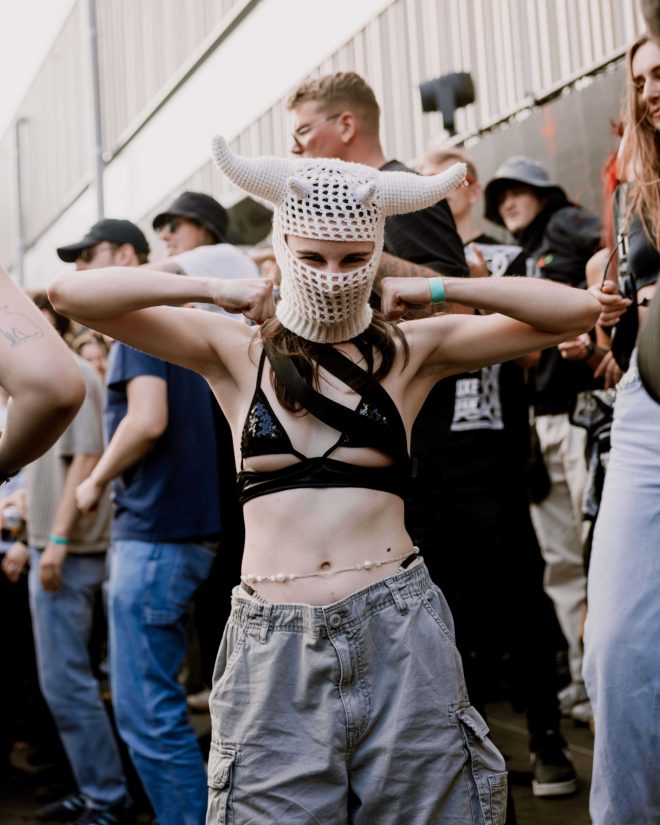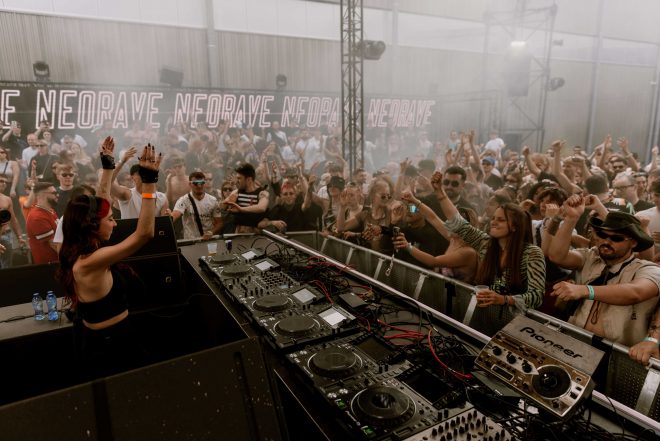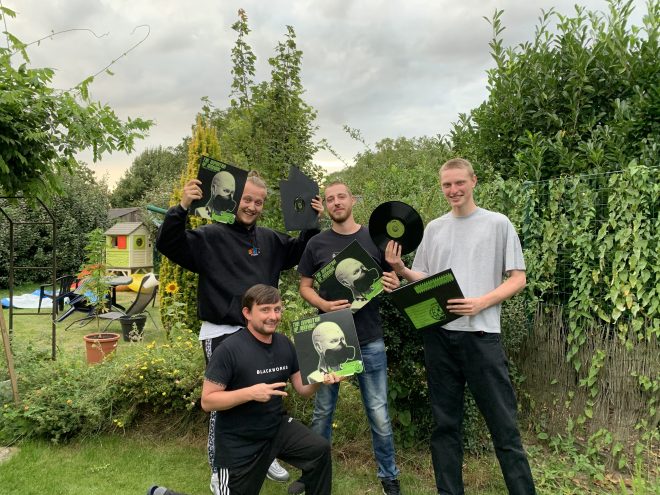NEO RAVE
Interview

The emergence of Neo rave stands as a testament to the genre's perpetual evolution and innovation. Born from the vibrant underground rave culture of Belgium in the late 2000s, Neo Rave represents a fusion of eclectic genres like techno, acid, hardcore, and jungle, giving rise to a distinct sonic landscape that defies traditional categorization. As its pulsating beats reverberate across dance floors worldwide, Neo Rave serves as a cultural phenomenon, embodying the ethos of acceptance, inclusivity, and rebellion against societal norms.
At the heart of Neo rave’s evolution lies a confluence of cultural, technological, and societal shifts. Enabled by advancements in music production technology and fueled by a desire for escapism amidst turbulent times, the genre has captured the imaginations of a diverse global audience. Furthermore, the resurgence of nostalgia for the golden era of rave culture in the 1980s and 1990s has provided a fertile ground for Neo Rave to flourish, drawing inspiration from the spirit of inclusivity and unity that defined those halcyon days.
In this illuminating interview, we delve deeper into the historical evolution, cultural significance, and societal impact of Neo rave with insights from Kenny Vandaele, Aka X&trick and founder of a rave alert which is considered “the home of Neo rave”.
Through his perspective, we explore Neo rave’s roots, key influencers, and the broader trends shaping its trajectory within the ever-evolving landscape of electronic music.

Can you provide insights into the historical evolution of Neo Rave, including its roots and how it has progressed over time?
“From my perspective, it started with the Rave Alert parties in Belgium back in 2008. We organized raves that hosted crossover genres like techno, acid, hardcore, jungle, breaks, …etc over several rooms. Like many new genres, firstly these styles got blended into our DJ sets but gradually people started producing this kind of hybrid sound. Eventually, I felt that this was not classic techno at all, as an artist I was touring a lot in the EU and I noticed similar trends in the European scene. The same evolutions happening in cities like Paris, Berlin, and Madrid. I figured it was time for a new genre name, and I chose Neorave (which Beatport split into two words ;)”.
What cultural, technological, or musical shifts have paved the way for the emergence of NEO RAVE as a distinct genre in electronic music?
“New genres are always an organic evolution of what is happening on the contemporary scene…It’s inherent to humans to look for new things, as we tend to get bored when things do not evolve. Next to that, new technologies and access to information have led young bedroom producers to quickly gain knowledge and a foundation to experiment in their home studio. This, in my opinion, has only intensified the logical trend towards a new sound which came from techno, trance and harder styles”.
How does the rise of NEO RAVE reflect broader trends or movements within contemporary culture and society?
“Even more than before, the current rave culture is about acceptance and inclusion, and the feeling that everyone should be and is part of something bigger. Rave brings people together, and the need to tune out from society, which can be pretty dark these days, in a peaceful atmosphere where everybody feels accepted seems a subversive trend towards what’s happening on both sociological, cultural, and political levels these days.

Are there any key events, albums, or artists that played a pivotal role in shaping the development of Neo rave?
“Without a doubt, the compilation ‘The Definition Of Neorave’ which came out on our label at Rave Alert in 2020 featured artists like DYEN, VCL, and Jan Vercauteren to name a few. As a label manager, I have also sought out young talents who align with the Neo Rave philosophy while still maintaining their unique sound”.
“Next to our label, we also have a booking agency and we have developed most artists with this sound through both the label and agency. We soon noticed that key players like Charlotte de Witte, Amelie Lens, and I Hate Models started playing the label and artist tracks and we felt we were going in the right direction”.
“However, the most key moment must be our release of Creeds ‘Push Up’. This track became a world hit, with hundreds of millions of plays, it became one of the biggest dance hits in 2023, and it could be considered the first Neo Rave track to hit the mainstream. This has had a huge impact on both the Neorave movement and our label and now even huge EDM artists have contacted us with a particular interest in this sound”.
What role has nostalgia for the original rave culture of the 1980s and 1990s played in the resurgence of interest in Neo rave?
“Belgium always had a leading role in the electronic dance music scene, and there is a huge culture of trance, and techno over here..along with the worldwide rave scene from that era, these influences seem to have returned big time and played an important role in the development of Neo Rave. The early rave sounds from the UK, Germany, and Detroit have an equal impact on that”.
“The spirit of rave which could be found in for example the famous ‘Summer of Love’ in English rave culture, or the smileys which are a trademark for the Belgian new beat sound and later became the worldwide sign for ‘Rave’, are also a wink to the past”.
What social or political factors, if any, have contributed to the rise of Neo rave and its popularity among audiences?
“Without a doubt, the COVID pandemic has contributed to the rise of Neo Rave, we noticed that. I am pretty sure that people being locked up only made the desire to party hard, and listen to harder and faster music more prominent. Once lockdown was over, people were ready for the next step, and things kind of exploded for us. It’s also interesting to see how Neo Rave is now gradually splitting up into new ‘sub-genres’ and how there is also a clear tendency towards psy and other forms of trance music”.

Has there been any crossover between Neo rave and other cultural movements or subcultures, such as fashion, art, or activism?
“Certainly the acceptance of LGTBQ+, and the general activism has always been a part of the rave culture and now that Neo has become a trend it can hopefully only contribute more to that. There is also a particular fashion and design style, driven by the many scenes like Berlin and Paris. Influence by hi-tech and metal fonts in a crossover output. The need for a visual aspect has become much more important due to the rise of visual social media like Instagram for example”.
How have online communities and digital platforms facilitated the growth and dissemination of Neo rave music and culture?
“I guess all kinds of social media or communication have helped this evolution, but Instagram has accelerated access to both the musical and visual information regarding this scene. These days Tiktok has also become a huge influence, it propelled ‘Push Up’ into stardom, and letting people use sounds on their videos was a game changer”.
Looking back at the history of electronic music, what similarities or differences do you see between the emergence of Neo rave and previous genre movements within the genre?
“It’s fascinating to see how genres grow, and how they emerge. From the rise of the Chicago house to the Detroit techno movement, or the gabber movement in Holland, I think it can all be seen as very similar: it grows out of a desire by young people to align their personal and cultural views with their own identity…It can also be seen as a reaction towards the trends in society, wanting to maintain their own culture and not being dragged into something ‘Which society wants to impose on them’…kind of a rebellious move, and in that perspective, I think Neo Rave can be”.
As Neo Rave continues to permeate mainstream consciousness, it serves as a rallying cry for a new generation of music enthusiasts seeking refuge in its euphoric melodies and pulsating rhythms. Through this interview, we delve deeper into the historical evolution, cultural significance, and societal impact of Neo rave, exploring its roots, key influencers, and the broader trends shaping its trajectory within the ever-evolving landscape of electronic music.


